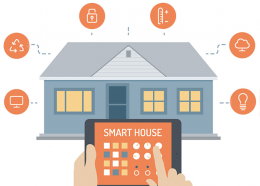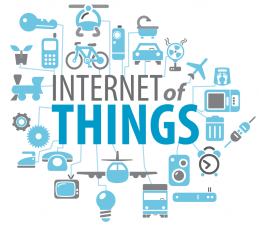By Gary Weishaar, Energy Engineer – Energy & Controls
Building automation is the centralized control of a building’s heating, ventilation and air conditioning, lighting, and other systems through a Building Management System or Building Automation System (BAS). A building controlled by a BAS is often referred to as an intelligent building, or a “smart building”.

While there are many vendors that provide Building Automation Systems, K-State uses Honeywell’s Enterprise Buildings Integrator, or EBI. Honeywell Inc. has been a presence at KSU since the mid 1980’s and is now installed in virtually every building on our main campus. Because of the size and complexity of this modern system, K-State’s Division of Facilities has a team of full-time technicians that manage this system in addition to the support provided by Honeywell.
In The Beginning
In its infancy, control systems were operated by a compressed air system, commonly known as pneumatics. While K-State still has several pneumatic applications on campus, technology has evolved over time into what is now known as Direct Digital Control, or DDC. DDC utilizes microprocessors and software programs (instead of compressed air) with greater precision and accuracy. Controls can be added to almost any mechanical or electrical device for control, monitoring, or scheduling. After initial installation, Controls Technicians can make modifications to how a device operates on desktops, iPads, or even smartphones. This kind of access allows users to view data and/or make adjustments from anywhere in the world.
software programs (instead of compressed air) with greater precision and accuracy. Controls can be added to almost any mechanical or electrical device for control, monitoring, or scheduling. After initial installation, Controls Technicians can make modifications to how a device operates on desktops, iPads, or even smartphones. This kind of access allows users to view data and/or make adjustments from anywhere in the world.
Applications for Today
One example of a “smart building” on our campus is the new College of Business building. A lighting system with motion sensors can detect when people use a space and then sends a signal to the HVAC system to engage and  respond accordingly. This type of interaction between building systems is regular and recurring in over 65,000 points being monitored and controlled in K-State buildings.
respond accordingly. This type of interaction between building systems is regular and recurring in over 65,000 points being monitored and controlled in K-State buildings.
In addition to providing comfort and life safety needs of building occupants, Building Automation Systems can also dramatically improve operational and energy efficiencies in a building. All of our most recent new projects including Engineering Phase IV, College of Business, Seaton/Regnier Hall and the new Chiller Plant have new controls, “smart valves”, and programming to allow better control and improved optimization. This has all played a major part in lowering the University’s electrical usage in the last five years over 15% even though we’ve added over 600,000 square feet of additional building space.
A Bright Future
With this much change over the last 30 years, what does the future of Building Automation look like? While nobody really knows, it is safe to say that there will be dramatic changes and improvements in how buildings are controlled. It is not unreasonable to think that the end devices and field controllers will be smart enough to identify where they are and what system they should connect to. They could be self-learning systems that can sense the health of an entire building and adjust settings based on millions of variables. The systems may also be more cloud-based. This will allow us to analyze how buildings are operating with even more power and logic based on information accumulated from thousands of similar buildings. This data collection will allow the BAS to learn algorithms and patterns from buildings that are deemed to be well-run, which will in turn allow the system to start distinguishing what is “normal” and what could be an abnormality. This can help with preventative maintenance and other operational efficiencies.
and other operational efficiencies.
Finally, we can expect to see an expansion of the “Internet of things” (IoT). While this may sound like a foreign language now, it will soon be as commonplace as the terms, “internet” and “Wi-Fi”. Simply put, IoT is the concept of connecting any device with an on and off switch (i.e. cellphones, coffee makers, washing machines, headphones, lamps, wearable devices and almost anything else you can think of) to the Internet…and to each other. The new rule for the future is going to be, “Anything that can be connected, will be connected.” For now the best thing that we can do is stay tuned, learn what we can, and acknowledge that ever-advancing technology like Building Automation Systems will continue to impact how we work and live.